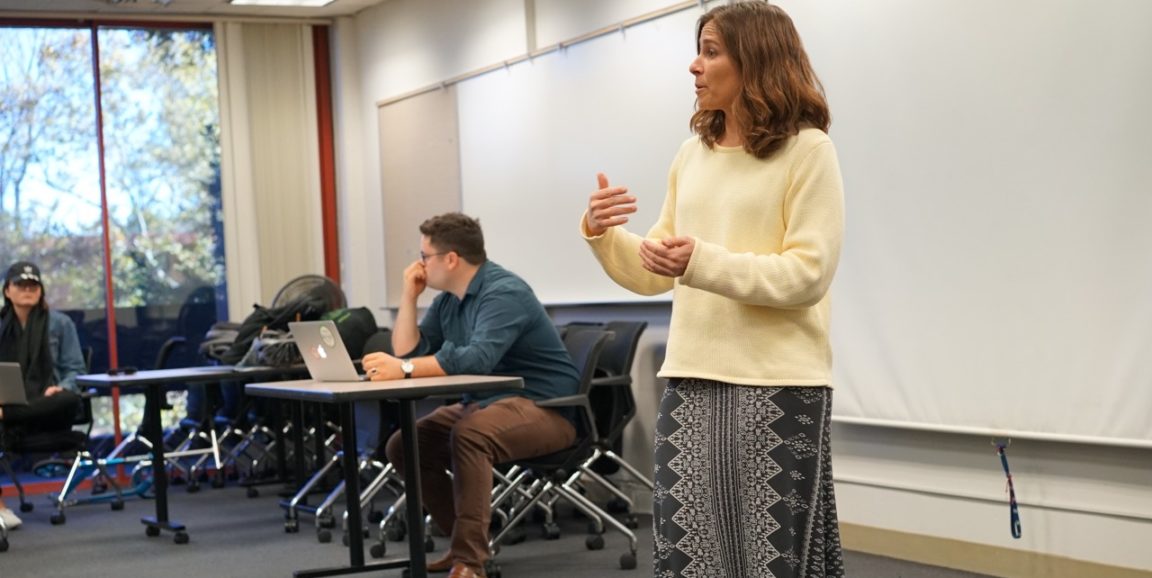Around the world today, approximately 41 million people are victims of modern slavery -- also known as human trafficking -- according to the International Labour Organization.
A Stanford University class started in 2012 uses a multidisciplinary approach to increase awareness and understanding of human trafficking and to detect, treat and decrease it. Taught by three Stanford faculty -- historian Katherine Jolluck, PhD; human rights and technology scholar Beth Van Schaack, JD; and emergency medicine physician Rebecca Walker, MD -- the class has seen dramatic growth in enrollment this year.
I recently talked with Walker about the class and its objectives to educate and empower care providers.
What drew you to teaching about human trafficking?
I initially became aware of how prevalent the problem was during medical school when I worked with migrant farm workers in North Carolina. As I learned more about it, I realized that a lot of health care providers did not know what to look for during potential opportunities to identify victims encountered as patients. Given that we are already trained in medical school to help in cases of child abuse and domestic violence, I wanted to be part of the effort in expanding those efforts to human trafficking as well.
Other universities have classes on human trafficking. How is Stanford's class unique?
We use cases we've authored based on real-life human trafficking cases, such as labor trafficking for fishing in Thailand or sex trafficking of a teenager in the United States, which we use to stimulate debates, inquiries, questions and answers.
The students tackle one particular aspect of the case that they have deemed significant as a group. They use what they learn from each other to then design prevention and intervention points. We also highlight the work -- through content as well as guest speakers -- of people in various industries who are creating novel and innovative tools for working to stop human trafficking.
The course is coupled also with a community service course that offers placement with nonprofits in the area who have room for student involvement.
Who takes the class and do they include any medical professionals or students?
Among 73 students, there is one physician enrolled, one lawyer, and quite a few undergrads who are considering medical school.
Health care providers are, and historically have always been, in a unique position to recognize and address human rights abuses of their time. Perhaps most significantly, students gain a deeper understanding of how social determinants of health are the most influential cause of inequalities in health outcomes.
What else do students get out of the class?
Some students will choose to jump right in and work with (or start) organizations that are actively working to combat trafficking, and everyone leaves the course with more awareness of their own impact and responsibility as consumers.
I think they also gain a deeper understanding of the factors, such as poverty, lack of opportunity, and a history of abuse, that make certain individuals more vulnerable to being trafficked and the value of targeting prevention efforts. Additionally, they are more aware of cutting-edge efforts, like app-based communications and criminal justice technology, to combat perpetrators of trafficking.
Caregivers for trafficking victims can also be affected by this work. What are some of the approaches you teach that help care providers and researchers maintain their own health?
This is an important topic and one that we feel strongly about addressing for ourselves and for the students. At the very least, we want students to know that something as simple as diving into the material for a class like this can cause anxiety and stress and that is normal.
Additionally, being able to recognize when things are negatively affecting your emotional state, your behavior, or your thoughts, is a worthwhile skill for life. We hope to teach students how to recognize when it might be time to take some actions to minimize those potential negatives.
And, yes, we also discuss how such profoundly meaningful work can also often lead to their own growth and resilience as well.
Is the class having an influence on the way Stanford screens patients for human trafficking?
As homelessness increases in Silicon Valley and mental health patients find it more and more difficult to find care, we are seeing an escalating population of patients in vulnerable positions that put them in high-risk categories for being victimized. There are new efforts from our Emergency Department to work with these patients and we hope to broaden that priority as much as possible to the rest of Stanford Health Care.
Photo by Susan Coppa




